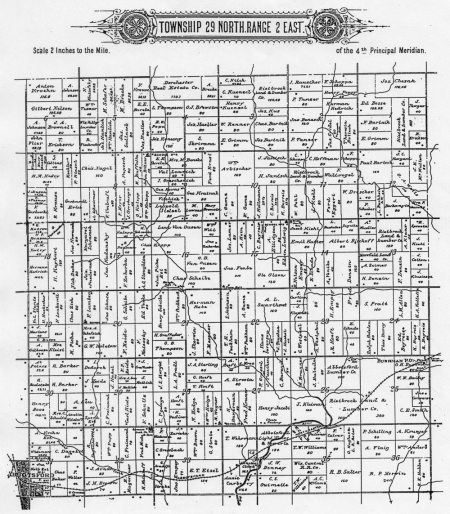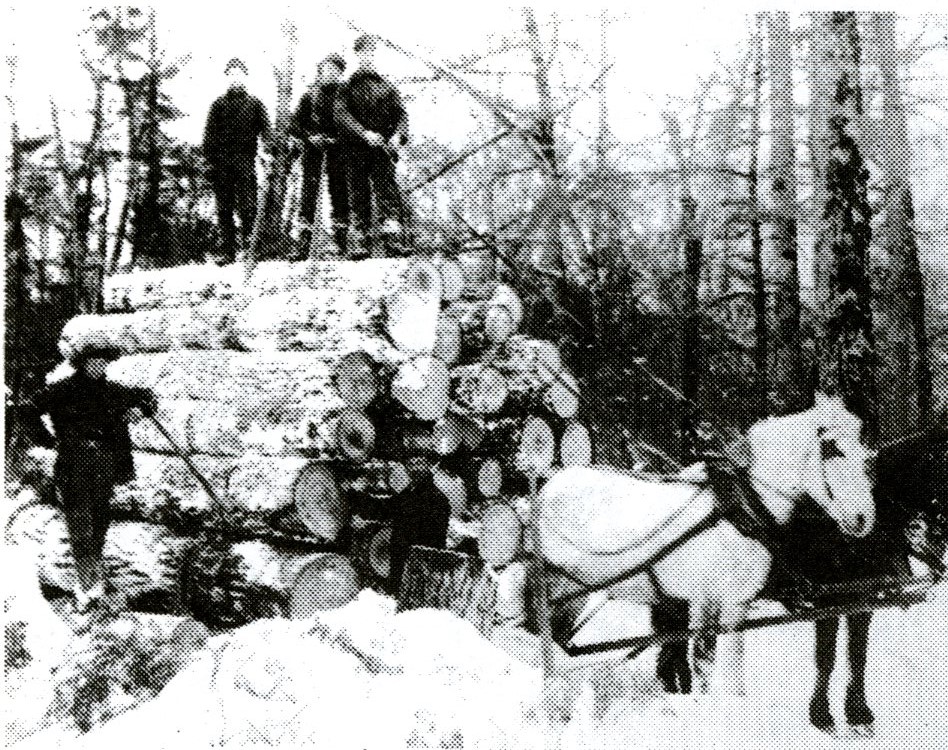Search our Places Database
Holton, Township of
Return To List of Locations | Back to Search
For more information on this location, please contact our research library.

Author:
Mary Moltzan
Location:
T. 29 N. - R. 2 E.
Formallized:
1875
Background:
Population: 1905-1256, 2000-907 Formed from part of Wien Township in 1875.
History of the territory which included Holton goes back to 1815 when Jonathon Carver, an Englishman, purchased 536,640 acres of land from chiefs of the Nawdoisse Indians "for many presents and good deeds". The territory was sold and resold after Carver's purchase until the United States of America deeded some of Section 10 to Irving Wyatt in 1873 .
At its beginning the Town of Holton included 36 sections. Every other section was owned by the railroad. The township was a part of the Town of Hull but in 1876 became a separate township, which included the Town of Johnson. Holton became its present size in 1883.
George W. Holeton, born July 9, 1840 and a Civil War veteran, settled in the area with his family in October 1871, and is considered the first settler. He was very interested in community affairs and had the first school district set off April 15, 1875. In 1876, the township was named after him. He died in 1931.
First Public Official:
A. G. Stonghton, Chairman, or T. B. Carpenter
Post Office Established:
June 4, 1897
First Postmaster:
George H. Bushman
About The Post Office:
The name was changed from Bushman to Milan on November 26, 1901 with Martin Ellingson as postmaster. The P.O. is still in service in the NE 1/4, Section 25 of Holton Township.
Railroad:
The Wisconsin Central RR ran northeast from Abbotsford through the county
Churches:
St. John's Lutheran Church - served by missionary pastors until 1882. After 1882, served by pastors of St. Peter's Lutheran Church, Dorchester. In 1924, the church merged with Christ Lutheran Church of Abbotsford.
Schools:
1. Dist. # 1 - Pickard School - organized April 15, 1875. The first school building, a log structure, was replaced by a frame schoolhouse in 1881. That building burned in 1886 or 87 and was rebuilt the following year and was in use until consolidation in 1962. It was located in Section 20.
2. Dist. # 2 - Rose Dale School - The town treasurer's records show expenses for building a new school on December 18, 1875. In 1885, a new school was built. In 1924, a new Rose Dale School was completed in Section 28.
3. Dist. # 3 - Brickerville School - Original school built in 1896 was replaced by a two room school built in 1905. It was almost destroyed by a tornado on September 28, 1971. Located in Section 15.
4. Dist. # 4 - Draper School was first a log building built in 1881. In 1892, a new frame school was built. Records show the names of teachers until 1962. It was located in Section 8.
5. Dist. # 5 - Barry School. Records are incomplete, but possibly built in 1907 in Section 12.
6. Dist. # 6 - no name - Section 36.
7. Dist. # 7 - Wright School located in Section 26.
Stories:
About the turn of the century, there were several amusement parks in the area, mostly located near villages. Here the citizens would take their families by horse and buggy, tie the horses to trees and enjoy the entertainment. These parks, often called beer gardens, were crowded on Sundays in the summer months. Town of Holton residents traveled to Abbotsford, Dorchester, Colby and Milan for entertainment often held at the local opera house. There was roller skating, medicine shows, political rallies, movies, dances and local high school proms. The Tri-County Farm Institute was held in Dorchester in the summer and ran for three days.
Holton residents were also fortunate to have the Skerbeck's Circus close by. The Skerbecks lived and operated their circus out of Dorchester for many years.
The era of the roaring 20s brought radio, talking pictures and prohibition, when nearly every gent carried a flask of moonshine in his hip pocket. One could purchase moonshine at nearly a dozen places in the Town of Holton day or night. Farmers who had good floors in their granaries or barns held dances which were very popular. Local talent provided the music.
Each school in town was a source of entertainment and social gathering. Some of the highlights were the annual Christmas program, annual picnic attended by the entire family, basket or box socials, card parties, ice cream socials and pie socials.



